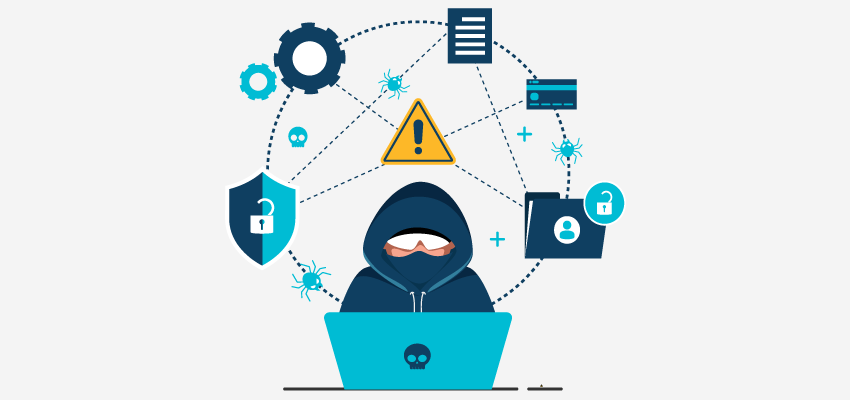Top 10 Cyber Security Threats in 2024

As technology continues to evolve, so too does the potential for cybercrime. Every year, the number of cyberattacks are growing significantly. The costs of cyberattacks are growing every year, on average, it’s expected to grow to $24 trillion by the year 2027. Businesses need to understand and prepare for cybersecurity threats is more critical than ever.
Is your business ready for the cyber risks that lie ahead?
In this guide, we’ll talk about the top 10 cybersecurity threats of 2024 and how to protect your business from them.
Top 10 Cybersecurity Threats in 2024
Cybercrime is one of the fastest-growing risks for businesses in 2024. Cybercriminals tend to target businesses across all industries and of all sizes. The larger and more successful your business, the greater the risk of a cyber threat.
1. Social Engineering
Social engineering remains one of the most dangerous hacking techniques because it exploits human error rather than technical vulnerabilities. It’s easier to trick a person than to breach a security system, which is why 74% of all data breaches involve some form of human interaction.
Tactics like phishing, spoofing, whaling, and baiting have become more sophisticated, with advancements in deepfakes and generative AI making these attacks harder to detect.
Common Social Engineering Attacks:
- Phishing: Fraudulent messages designed to trick individuals into revealing sensitive information.
- Spoofing: Deceptive emails or websites that appear legitimate.
- Whaling: Targeted phishing aimed at high-ranking executives.
- Baiting: Enticing victims with fake offers to install malware or reveal personal information.
2. Third-Party Exposure
Hackers often target third-party networks that have access to larger, more secure systems. This type of attack is increasingly common, with 29% of all data breaches in 2023 linked to third-party vulnerabilities. A notable example is the 2024 AT&T breach, which exposed sensitive data of over 70 million customers.
3. Configuration Mistakes
Even professional security systems can contain configuration errors, leaving vulnerabilities that hackers can exploit. Misconfigurations, such as using weak passwords or failing to update software, are common issues that can lead to major data breaches.
Common Configuration Mistakes:
- Default Device Settings: Not changing factory settings on network devices.
- Network Segmentation: Failing to separate sensitive information on different networks.
- Software Updates: Not regularly updating and patching software.
4. Artificial Intelligence Cyber Threats
AI has revolutionized cybersecurity, both for defenders and attackers. Cybercriminals are using AI to automate attacks, making them more frequent and sophisticated. In response, businesses are adopting AI-driven security systems to stay ahead of these threats.
5. DNS Tunneling
DNS tunneling is a technique that allows attackers to secretly transmit data by hiding it within regular DNS traffic. This method is effective and relatively easy to execute, making it a common attack vector.
6. Insider Threats
Insider threats, whether intentional or accidental, can cause significant damage. These threats are difficult to detect because insiders already have access to sensitive systems. Whether it’s an employee unintentionally falling for a phishing scam or deliberately leaking data, insider threats pose a serious risk.
7. State-Sponsored Attacks
State-sponsored attacks are on the rise, often targeting critical infrastructure, military organizations, or government bodies. These attacks are highly sophisticated and can have devastating consequences, as seen in recent conflicts involving nation-states.
8. Ransomware
Ransomware is one of the most financially devastating cyber threats. The average ransom has skyrocketed to $2 million in 2024, a 500% increase from 2023. Ransomware not only disrupts operations but also incurs significant recovery costs.
9. Trojan Horses
Trojan Horses are malicious software disguised as legitimate code. Once installed, they can steal data, control devices, or install additional malware. Despite being an old technique, Trojan attacks remain a common and serious threat.
10. Drive-By Downloads
Drive-by attacks occur when visiting a compromised webpage results in automatic malware downloads. These attacks are often hidden in fake advertisements or pop-ups, making them difficult to avoid without proper security measures.
Staying Ahead of Cyber Threats
Navigating the ever-evolving landscape of cybersecurity can be overwhelming. While no system can guarantee complete protection, combining strong cybersecurity measures with adequate insurance can help mitigate the impact of a successful attack. By staying informed and proactive, you can protect your organization from the growing threats in 2024 and beyond.












